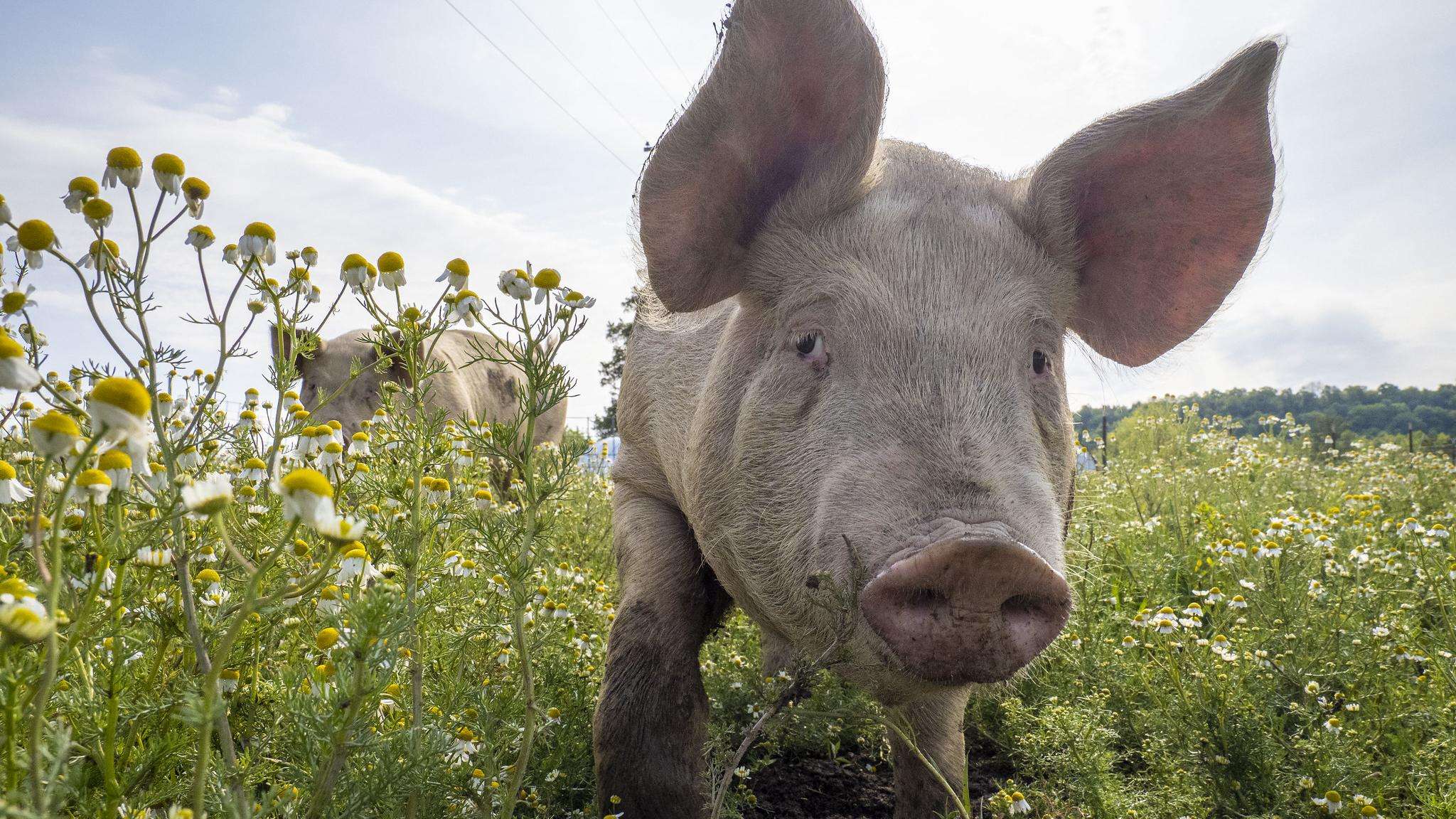Swine Brucellosis

Swine brucellosis is an infectious disease caused by the bacteria Brucella suis (B. suis). It produces chronic inflammatory lesions in the reproductive organs that lead to abortions, infertility, and birth of weak piglets. The disease can also attack joints, leading to lameness.
The United States eliminated the disease from commercial swine in 2011. However, swine brucellosis is still present in wild swine in this country. Pigs exposed to feral swine are at risk of infection.
Swine brucellosis can infect people. Anyone exposed to infected pigs should contact their health provider immediately.
Clinical signs may be subtle, such as a slightly reduced birthing rate or a return to heat after breeding. Infected swine may not show any signs of illness.
When they do show signs, the most common ones include:
- Abortion
- Temporary or permanent sterility
- Swollen testicles
- Lameness
- Posterior paralysis
- Stillborn, mummified, or weak piglets
If you suspect swine brucellosis in your herd, contact an accredited veterinarian.
Biosecurity is the best defense against this disease. Producers should:
- Use double fencing and other measures to keep pigs away from feral swine.
- Source new pigs from validated-qualified (VQ) swine herds. VQ herds are routinely tested for swine brucellosis and pseudorabies. Buying from a VQ herd reduces the risk of introducing these diseases into your herd.
- Work with an accredited veterinarian to develop a quarantine and testing regimen for new additions to your herd.
- Obtain semen for artificial insemination from verified, disease-free sources.
For more specific recommendations, see our biosecurity resources for swine owners.
There is no vaccine or effective treatment for swine brucellosis.
Report Signs of Animal Disease
Producers or owners who suspect an animal disease should contact their veterinarian to evaluate the animal or herd. Find an accredited veterinarian.
Animal health professionals (veterinarians; diagnostic laboratories; public health, zoo, or wildlife personnel; and others) report diagnosed or suspected cases of nationally listed reportable animal diseases to APHIS Area Veterinarians in Charge and to the State animal health official as applicable under State reporting regulations.
Controlling Swine Brucellosis
APHIS developed uniform methods and rules (49.33 KB) for eradicating swine brucellosis from domestic swine in the United States. These minimum methods and rules were endorsed by swine health practitioners at the annual U.S. Animal Health Association meeting in 1997 and are still recommended today.
All 50 States, Puerto Rico, and the U.S. Virgin Islands are brucellosis-free. For the latest updates by State, visit Status of Current Eradication Programs.
APHIS provides indemnity and compensation to producers to:
- Remove animals that are affected, suspected, or exposed to diseases of concern
- Eliminate dangerous viruses from the environment
If your herd is impacted by swine brucellosis, you may qualify for a Federal indemnity payment to reimburse you for your related losses. To learn more, contact our Swine Health Center at vs.sp.asep.swine@usda.gov.
Brucellosis can affect people and animals. Learn how to protect yourself, your family, and your employees from this disease.
External Resources
- Centers for Disease Control and Prevention
- The Center for Food Security & Public Health
APHIS Wildlife Services conducts surveillance and research on dozens of wildlife diseases, including brucellosis and other diseases associated with feral swine. For more information, visit our National Wildlife Disease Program and National Wildlife Research Center.

